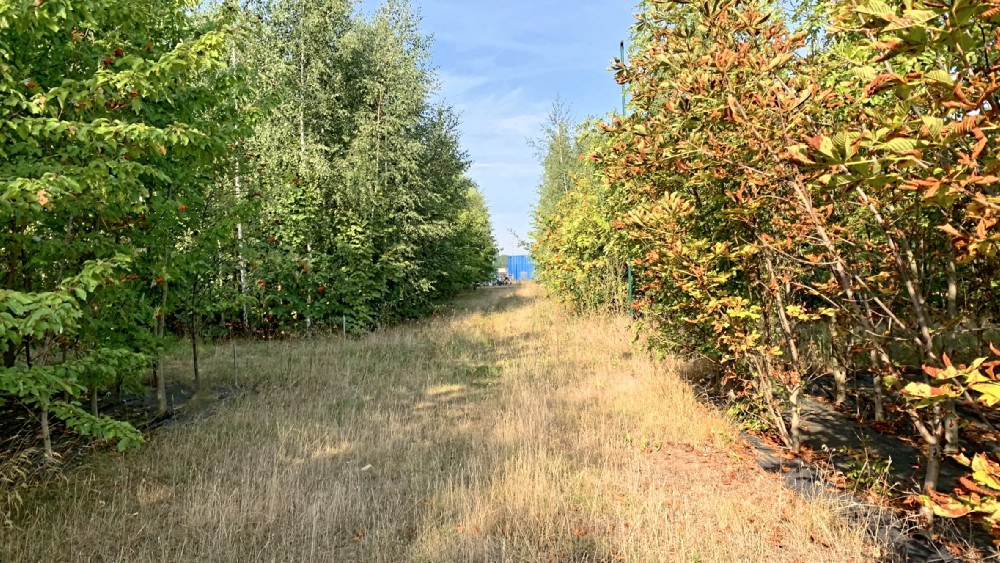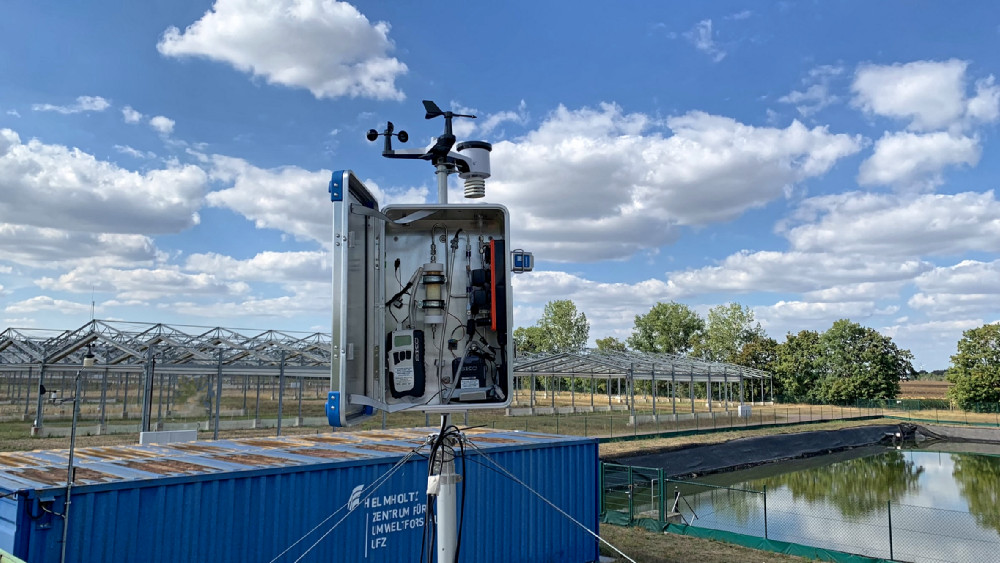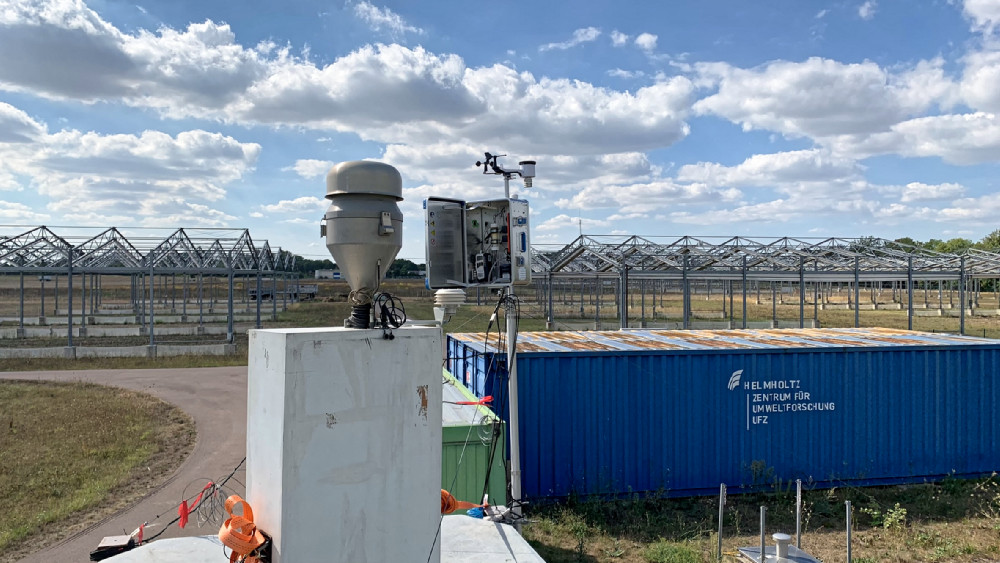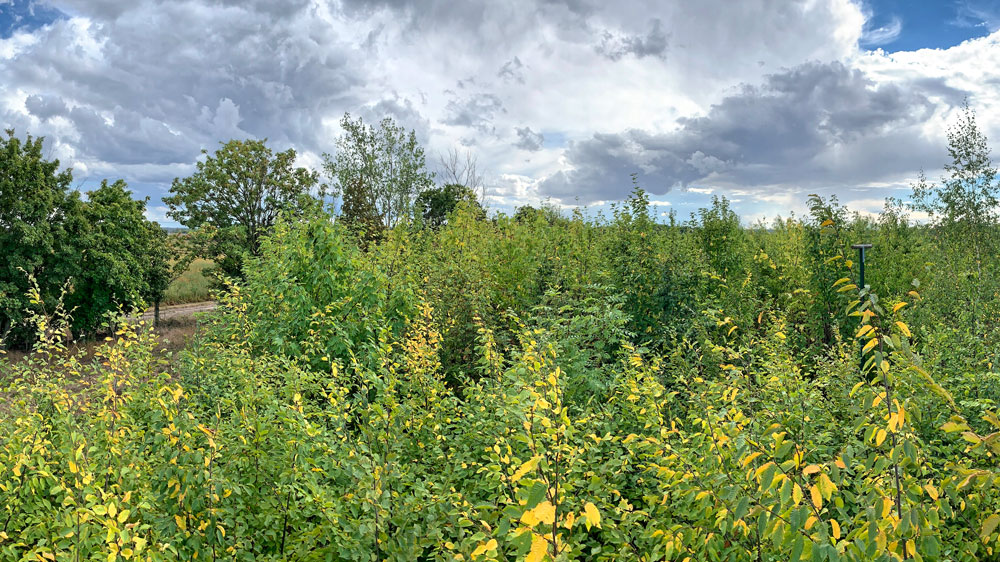How forests smell – a risk for the climate?
Leipzig, 13.12.2023
New study by Leipzig University, TROPOS and iDiv on the link between biodiversity and climate
Leipzig. Plants emit odours for a variety of reasons, such as to communicate with each other, to deter herbivores or to respond to changing environmental conditions. An interdisciplinary team of researchers from Leipzig University, the Leibniz Institute for Tropospheric Research (TROPOS) and the German Centre for Integrative Biodiversity Research (iDiv) carried out a study to investigate how biodiversity influences the emission of these substances. For the first time, they were able to show that species-rich forests emit less of these gases into the atmosphere than monocultures. It was previously assumed that species-rich forests release more emissions. The Leipzig team has now been able to disprove this assumption experimentally. Their study has been published in the journal "Communications Earth & Environment".
Plant odours penetrate the atmosphere
Plants produce a variety of organic compounds to communicate with each other and with their environment. These are known as biogenic volatile organic compounds (BVOCs), such as terpenes, which give plants their characteristic scent and help to repel pests. As well as acting as chemical signals, these substances play a role in regulating climate, air quality and atmospheric chemistry. This is because these BVOCs emitted by plants form biogenic secondary organic aerosols (BSOAs) in the air, i.e. particles in the atmosphere. These aerosols in turn affect air quality, cloud formation and the climate.
MyDiv Experiment: Measurements in plots with different tree species
But how do emissions and concentrations of aerosols in the air change as biodiversity declines or plants are stressed by drought? The interdisciplinary team led by scientists Dr Anvar Sanaei and Professor Alexandra Weigelt from Leipzig University and other researchers from TROPOS and iDiv investigated this question. The scientists collected the data at the MyDiv tree diversity experimental site. The site, near Bad Lauchstädt in Saxony-Anhalt, covers around two hectares and has 80 plots with ten tree species growing together in monocultures or mixtures of different species. For the study, the team spent almost two weeks collecting air samples from ten of the 11x11 metre plots, which grow four tree species – rowan, wild cherry, common ash and sycamore – in different combinations.
Fewer plant odours, fewer risks
“In the field, we measured BVOCs and BSOA compounds in ten plots of varying tree diversity. Our results show that the amount of BVOCs decreases with increasing biodiversity in most cases,” says Dr Anvar Sanaei, first author of the study and postdoctoral researcher at the Institute of Biology at Leipzig University. It is estimated that global BVOC emissions from vegetation will increase by around a third as a result of climate change and higher temperatures. “There are considerable uncertainties here: these precursor gases can form particles, which in turn can become cloud droplets. Whether BVOCs ultimately cool or warm the atmosphere depends on many factors and is difficult to predict. However, more biodiversity and fewer BVOCs would reduce the changes in the atmosphere and thus also the risks of climate change – including changes in precipitation,” adds Professor Hartmut Herrmann from TROPOS. The second part of the study shows how difficult it is to investigate these complex processes in the field: the team was unable to establish any clear correlations for BSOAs, which could be partly due to environmental influences, as the conversion of BVOC gases into BSOA particles takes a certain amount of time. At just under two weeks, the measurement campaign was also comparatively short. That is why the team wants to continue the research – not least because many questions remain unanswered.
More stress, more plant odours?
Previously, it was thought that species-rich forests and grasslands released more gases into the atmosphere than species-poor ones. The reason for this was thought to be that species-rich systems produce more biomass because they can utilise resources such as light, water and nutrients more efficiently. More biomass then also means more leaf surface area from which the gases can be emitted. “Our new results, however, suggest that the situation may be due to the fact that plants in species-rich forests and grasslands are under less stress. Compared to monocultures, they face fewer herbivores and less heat and drought. But this is just a hypothesis for now. Much more research is needed to better understand how biodiversity affects the atmosphere, where we need to look more closely at the microclimate, above- and below-ground stress on plants, and many other factors in long-term experiments,” says Professor Nico Eisenhauer from iDiv.
Biology + climate research + chemistry = A team fit for the future
What made this study so special was that different disciplines worked together, combining atmospheric and biological measurements. “Only with knowledge from biology, climate research and atmospheric chemistry can we decipher how plant emissions are linked to biodiversity and the atmosphere. Our study highlights the need for experiments at the local and regional scales and the development of models to improve our understanding of biosphere-atmosphere interactions,” says senior author Professor Alexandra Weigelt from the Institute of Biology. She adds that this is a prime example of the Breathing Nature research project, for which the University submitted a draft proposal back in May as part of the Excellence Strategy. After all, answers to the pressing questions of our time can only be found by transcending disciplinary and institutional boundaries.
Katarina Werneburg / Tilo Arnhold
Publication:
Anvar Sanaei, Hartmut Herrmann, Loreen Alshaabi, Jan Beck, Olga Ferlian, Khanneh Wadinga Fomba, Sylvia Haferkorn, Manuela van Pinxteren, Johannes Quaas, Julius Quosh, René Rabe, Christian Wirth, Nico Eisenhauer & Alexandra Weigelt: Changes in biodiversity impact atmospheric chemistry and climate through plant volatiles and particles. Commun Earth Environ 4, 445 (2023). https://doi.org/10.1038/s43247-023-01113-9
The study was funded by the Saxon State Ministry of Science, Culture and Tourism (SMWK; 3-7304/35/6-2021/48880), the European Union (ACTRIS-IMP (871115), ATMO-ACCESS (101008004) and ACTRIS-D (01LK2001A)), the European Research Council (ERC) under the European Union's Horizon 2020 research and innovation programme (Grant Agreement No. 677232) and the German Research Foundation (DFG; via Gottfried Wilhelm Leibniz Prize (Ei 862/29-1) and the German Centre for Integrative Biodiversity Research (iDiv) Halle-Jena-Leipzig (FZT 118, 202548816)).
Links:
TROPOS-Abteilung Chemie der Atmosphäre
Media contacts:
Anvar Sanaei
Research assistant, Special Botany and Functional Biodiversity, Leipzig University
Phone: +49-341-97-38587
https://www.lw.uni-leipzig.de/personenprofil/mitarbeiter/ph-d-anvar-sanaei
and
Professor Alexandra Weigelt, Special Botany and Functional Biodiversity, Leipzig University
Phone: +49-341-97-38594
https://www.lw.uni-leipzig.de/personenprofil/mitarbeiter/prof-dr-alexandra-weigelt
and
Professor Hartmut Herrmann
Head of the Atmospheric Chemistry Department, Leibniz Institute for Tropospheric Research (TROPOS)
Phone: +49-341-2717-7024
https://www.tropos.de/en/institute/about-us/employees/hartmut-herrmann
or
Media Editorial Office, University Communications Office, Leipzig University
Phone: +49-341-97-35025
https://www.uni-leipzig.de/universitaet/service/medien-und-kommunikation
and
Dr. Volker Hahn / Kati Kietzmann, Media and Communications, German Centre for Integrative Biodiversity Research (iDiv) Halle-Jena-Leipzig
Phone: +49-341-97-33154, -39222
https://www.idiv.de/de/gruppen-und-personen/zentrales-management/medienservice.html
and
Tilo Arnhold, Public Relations, Leibniz Institute for Tropospheric Research (TROPOS), Leipzig
Phone: +49-341-2717-7189
https://www.tropos.de/en/current-issues/press-releases
The Leibniz Institute for Tropospheric Research (TROPOS) is a member of the Leibniz Association, which connects 97 independent research institutions that range in focus from the natural, engineering and environmental sciences via economics, spatial and social sciences to the humanities. Leibniz Institutes address issues of social, economic and ecological relevance. They conduct knowledge-driven and applied basic research, maintain scientific infrastructure and provide research-based services.
The Leibniz Association identifies focus areas for knowledge transfer to policy-makers, academia, business and the public. Leibniz institutions collaborate intensively with universities – in the form of “Leibniz ScienceCampi” (thematic partnerships between university and non-university research institutes), for example – as well as with industry and other partners at home and abroad.
They are subject to an independent evaluation procedure that is unparalleled in its transparency. Due to the importance of the institutions for the country as a whole, they are funded jointly by the Federation and the Länder, employing some 20,500 individuals, including 11,500 researchers.
The entire budget of all the institutes is approximately 2 billion euros. They are financed jointly by the Federal Government and the Länder. The basic funding of the Leibniz Institute for Tropospheric Research (TROPOS) is therefore financed by the Federal Ministry of Education and Research (BMBF) and the Saxon State Ministry of Science and the Arts (SMWK). The Institute is co-financed with tax revenues on the basis of the budget approved by the Saxon State Parliament.
https://www.leibniz-gemeinschaft.de/en/home/
https://www.bmbf.de/en/index.html




